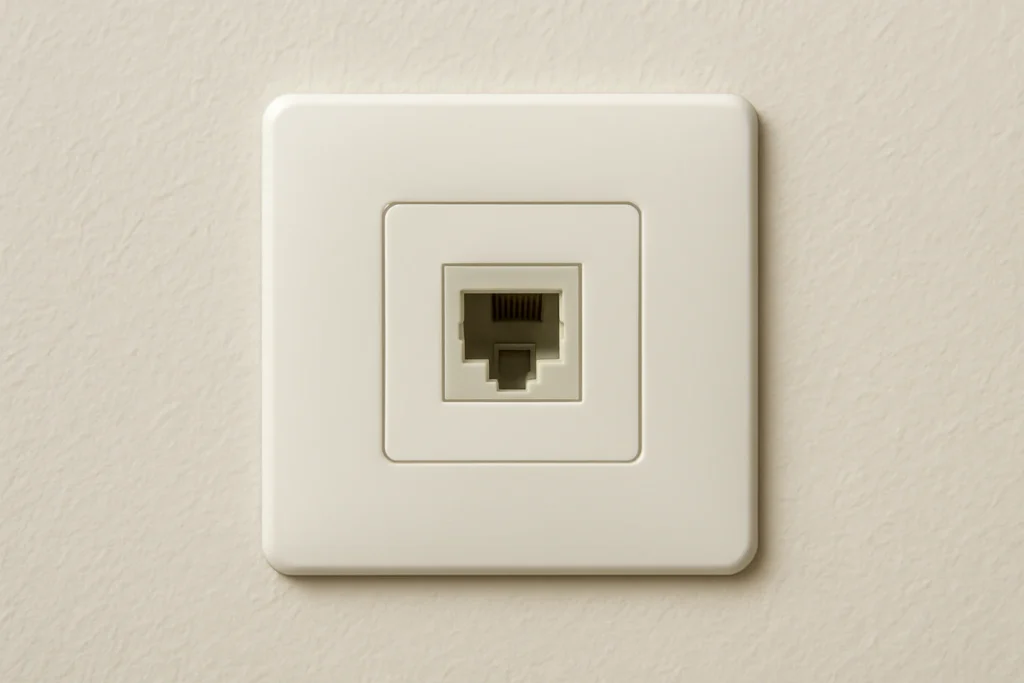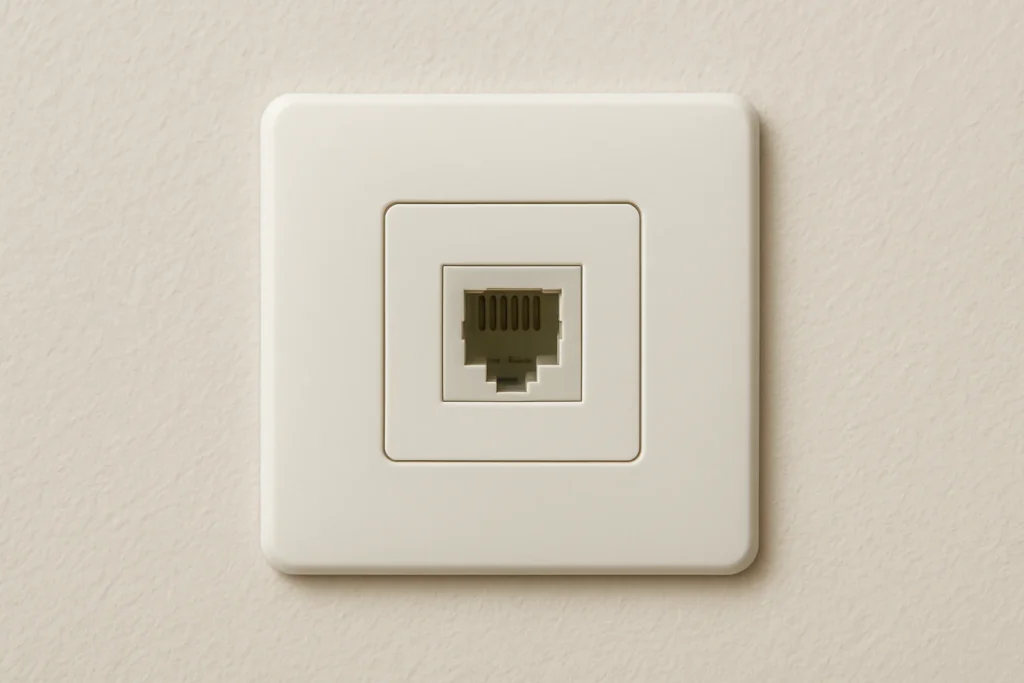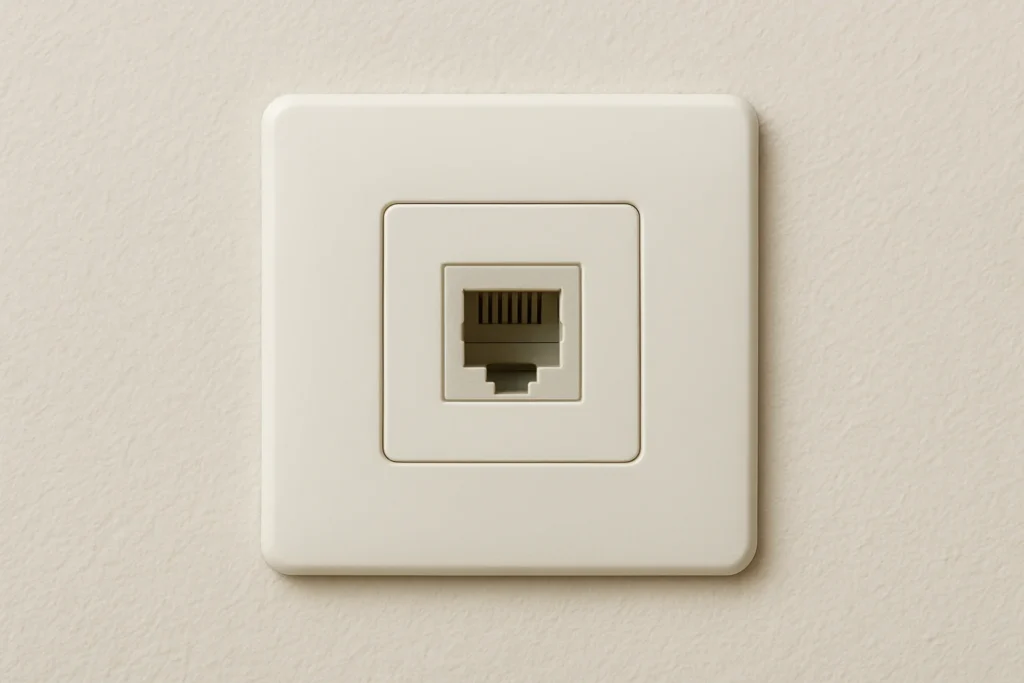Phones are always considered an important part of the daily life of people. Long before mobile phones became common, people relied on landline phones at homes, schools, and offices to stay connected. However, to make these landline phones work properly, a small but very important part was always needed. That part is called a phone line jack.
Basically, a phone line jack is a small connecting source that allows a landline phone to link with the telephone network. No doubt without the phone, it would simply not work, and even in today’s digital age, phone jacks have not completely disappeared. There are numerous houses, offices, and internet organizations that still use them for communication, broadband connections, and other mechanical arrangements.
We all know that the phone line jacks may look tiny, but they play an important role in ensuring smooth communication and data transfer and phone connections. There are different types of phone jacks designed for different purposes, such as voice calls, internet, or even older-style switchboards.
So, in this article we will explore the top 10 phone line jack types, their features, and where you can commonly find them. Also, we will cover everything you need to know with verified information. Therefore, by the end, you will have a clear idea about the main phone line jack types still used today and how to identify them.
1. RJ11 Jack

- The most common type of phone line jack.
- Used in almost every home landline phone.
- Has 6 slots but uses only 2 or 4 wires.
- Small, simple, and easier to connect.
If you have a normal home telephone, you are probably using an RJ11 jack.
2. RJ12 Jack
- Looks almost the same as RJ11.
- Uses all 6 wires inside the connector.
- Mostly used in office phones.
- Allows extra features like handling multiple lines.

This type is perfect when more functions are required in a business environment.
3. RJ14 Jack

- Supports two phone lines in one jack.
- Has 4 wires connected.
- Popular in small offices or home offices.
For example, one line can be used for personal calls and another for business.
4. RJ25 Jack
- Supports three phone lines.
- Uses all 6 wires inside.
- Not common in homes but used in offices.
RJ25 is best when you need three different numbers running through one socket.
5. RJ45 Jack
- Bigger than RJ11 or RJ12.
- Has 8 wires inside.
- Mostly used for internet connections.
- Also supports some digital phone systems.
If you set up broadband or Wi-Fi at home, you have probably seen RJ45 plugs.
6. RJ61 Jack
- Supports four phone lines.
- Uses 8 wires, similar to RJ45.
- Mostly used in old, large office systems.
It is rare today but still found in older business setups.
7. British Standard Jack (BS 6312)
- Common in the United Kingdom.
- Larger in size compared to RJ types.
- Used in almost all UK homes for landline phones.
If you are in the UK, your phone line jack is likely BS 6312.
8. Australian Phone Jack
- Special design used only in Australia.
- Flat and wide shape.
- Different from all RJ types.
This shows how each country has its own standards for phone jacks.
9. RJ48 Jack
- Looks similar to RJ45.
- Used for ISDN (Integrated Services Digital Network).
- Strong and reliable, designed for business use.
RJ48 is common in companies that need secure and high-quality communication.
10. RJ21 Jack
- Much larger than all other jacks.
- Supports up to 25 phone lines at once.
- Used in telephone companies and very large offices.
This jack is not used in homes but is important for big communication networks.
Quick Comparison of Top 10 Phone Line Jacks
- RJ14 – Two lines, home office.
- RJ11 – One line, home use.
- RJ12 – Six wires, office use.
- RJ25 – Three lines, business use.
- RJ45 – Internet and phones.
- RJ61 – Four lines, older offices.
- BS 6312 – Used in the UK.
- Australian Jack – Used in Australia.
- RJ48 – ISDN and secure business.
- RJ21 – Large setups with 25 lines.
How to Identify Your Phone Jack
- Check the size of the connector.
- Count how many wire slots are inside.
- See if it is used for phone or internet.
- Consider the country because standards vary.
Why Knowing Phone Line Jack Types Matters
- Helps when setting up phones and modems.
- Saves money when replacing broken jacks.
- Useful for office workers managing multiple lines.
- Makes internet installation easier to understand.
Common Problems With Phone Line Jacks
- Loose or broken wires stop the phone from working.
- Dust inside the jack can block the signal.
- Broken plastic parts prevent the plug from locking in.
- Using the wrong jack type can cause no connection.
FAQs
What Are the Most Common Phone Line Jack Types Used Today?
The most common phone line jack types used today are RJ11 and RJ45. Also, these jacks are widely trusted for home, office, and internet connectivity, which makes them dependable for both voice and data transformation.
How Can I Identify Different Types of Phone Jacks in My Home or Office?
Yes, you can easily recognize diverse kinds of phone jacks even by their size, pin count, and shape. For example, RJ11 usually has 4–6 pins, while RJ45 has 8 pins and is slightly wider.
Why Is It Important to Know About Various Phone Line Jack Types?
As by understanding the types, it will help you out in choosing the right one for your device, ensuring smooth communication and internet speed. It also avoids compatibility issues when setting up new equipment.
Are Older Types of Phone Jacks Still in Use Today?
Yes, some older types of phone jacks like RJ12 or 4P4C are still found in legacy telephone systems. However, most modern setups now prefer RJ45 and RJ11 for better effectiveness and adaptability.
Final Thoughts
Phone line jacks may be small, but they are very important for connecting phones and internet systems. A simple RJ11 is commonly used at home, while larger setups like RJ21 are found in big buildings and offices. Each type has a specific purpose, from voice calls to internet or bigger networks. By knowing the top 10 phone line jack types, you can connect devices more easily, fix issues quickly, and understand why different standards exist in different countries. Even with mobile phones everywhere, phone jacks still play a valuable role today.



